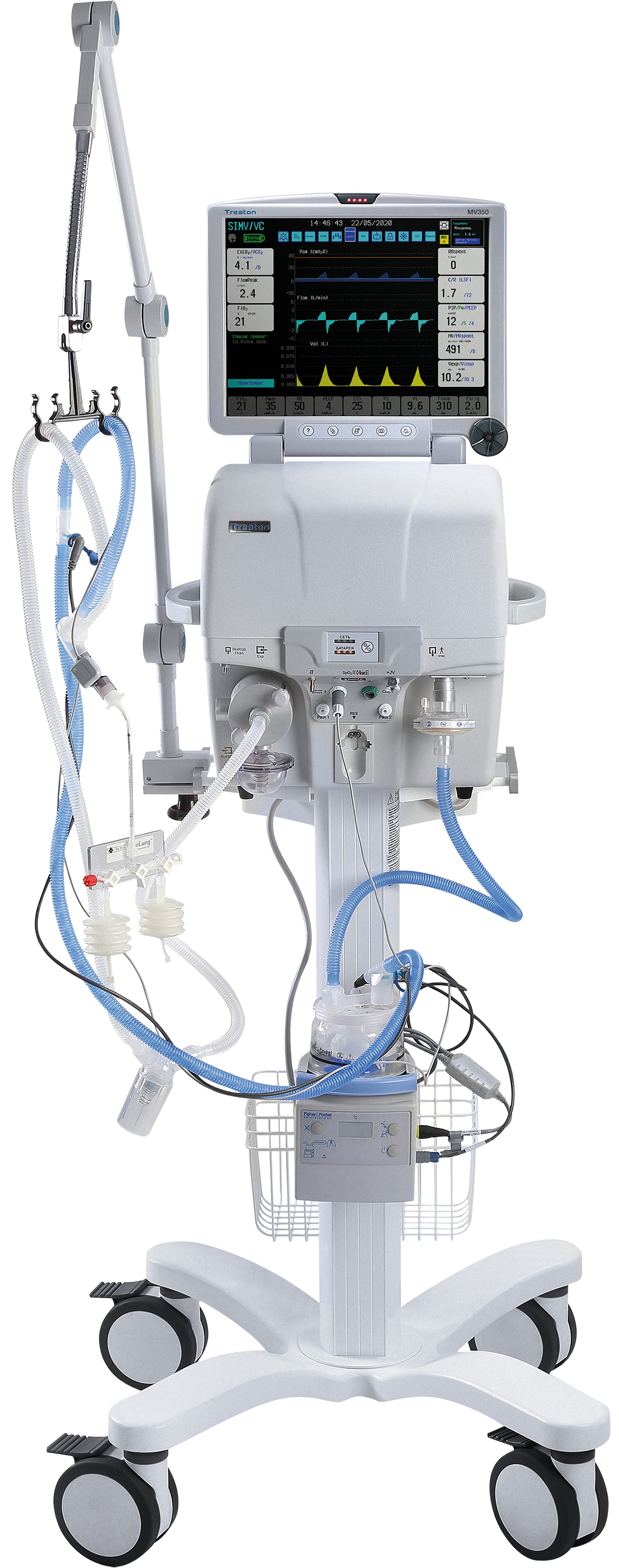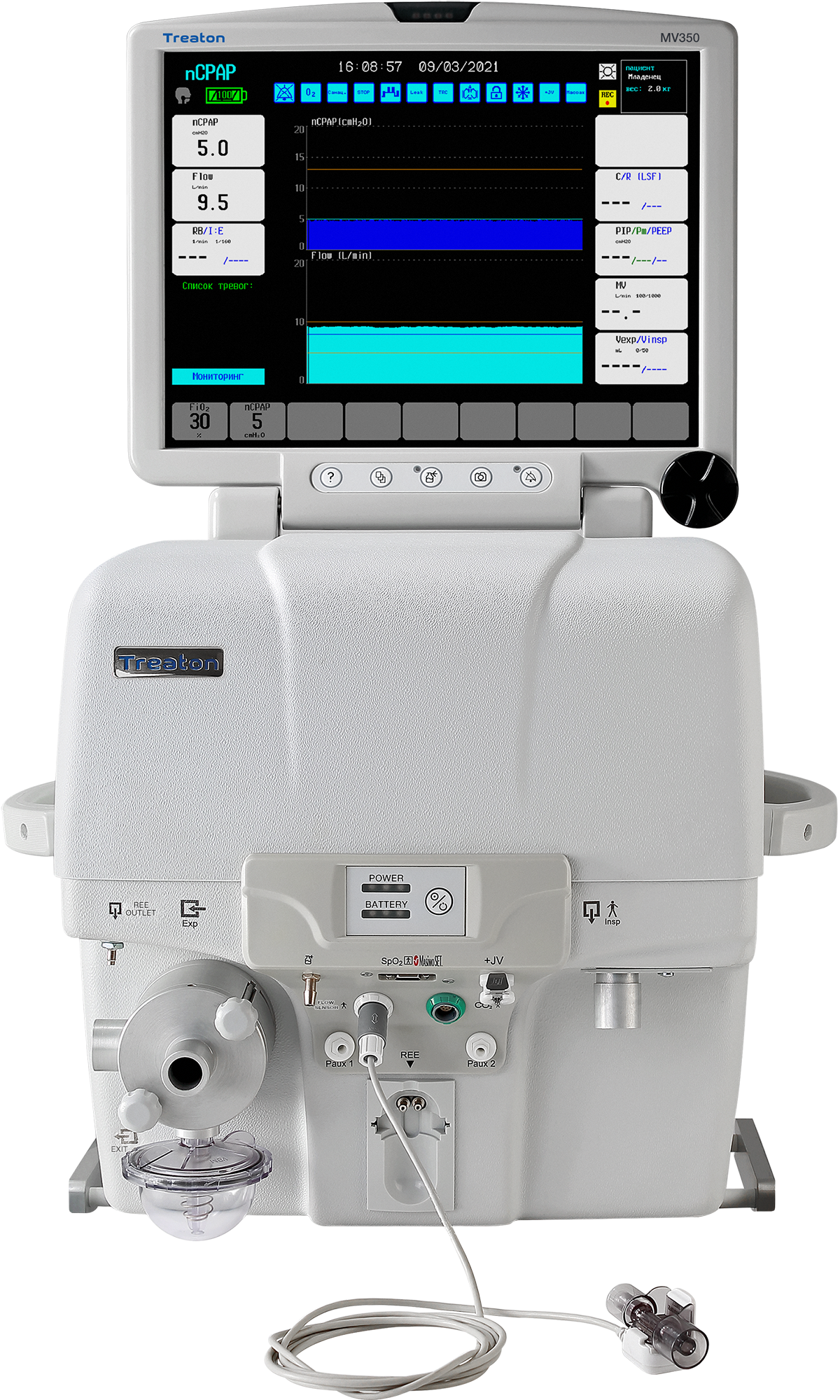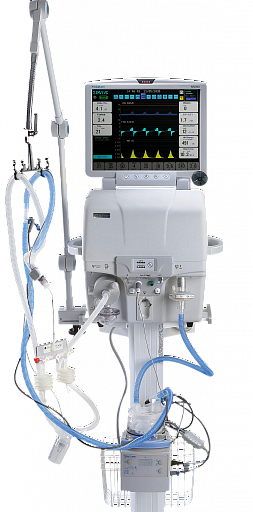Intensive Care Ventilator Zisline MV350

Turbine-driven
Zisline MV350 is a state of the art
turbine-driven ventilator suitable for all
patient groups, including extremely low
weight babies. It can also be used for
intrahospital transport
Minimum tidal volume from 1 ml
MV350 has very reliable digital proximal flow sensor. The sensor measures volume and flow velocity at the ET-tube.
This allows to deliver extremely precise breathing gas volumes and to respond to any breathing attempts of the patient
This allows to deliver extremely precise breathing gas volumes and to respond to any breathing attempts of the patient

Masimo SET pulse oximetry
The ventilator is compatible with all types of Masimo SET® SpO2 sensors
ALL-IN-ONE ventilator for all patients, including preterm babies
Reliable digital proximal flow sensor
The sensor measures the leakage with high accuracy
For 4 to 6 back-up battery
Prolonged operation without mains power ensures high level of patient safety
Modes for neonatal patients through a nasal cannula or mask
nCPAP and nIMV
Reliable autoclavable exhalation valve
Ventilator is equipped with exhalation valve, which can be easily disconnected from the device and processed in autoclave. Number of sterilization cycles is unlimited

- 01 /
- 02 /
- 03 /
- 04 /
Documents and manuals
Have some questions? Write us and we answer you
Partner Registration is available for our Distributors and allow you to download our latest Technical Data Sheets, User Manuals, Service Manuals, Certificates and Marketing Materials.
Registration is an easy process. Please click the 'Register' button to begin, fill in the form, and you will be contacted by our International Sales Team within a couple of working days about your registration, User ID and password.
If you are having problems filling out this form, send us an email: info@treat-on.com for assistance.